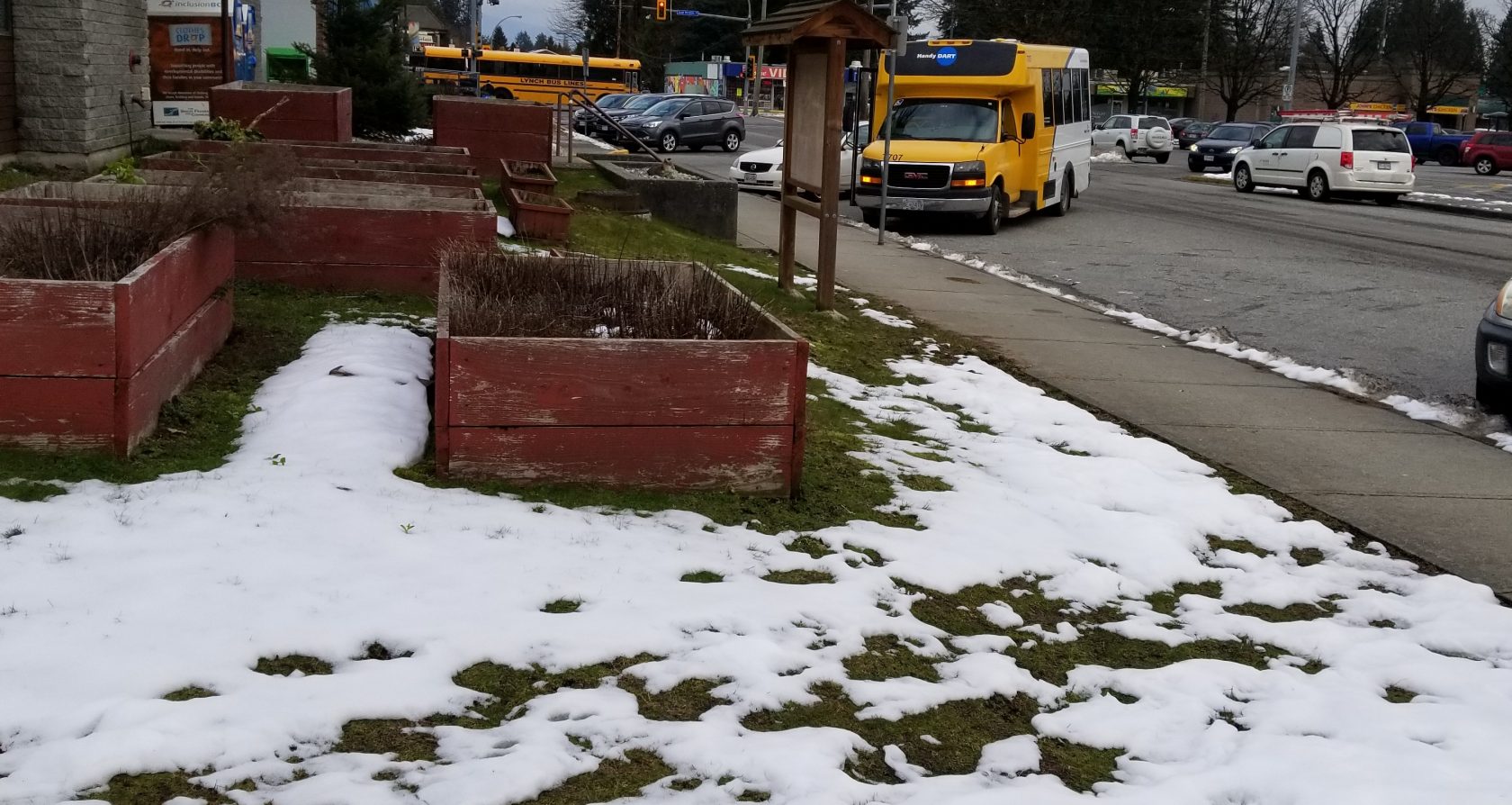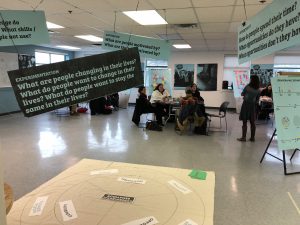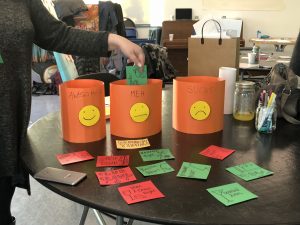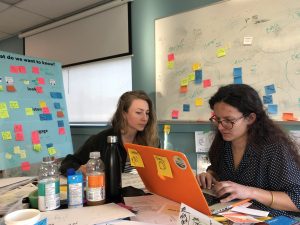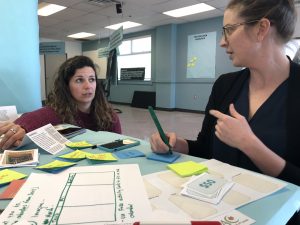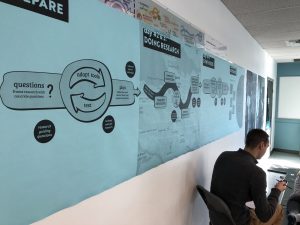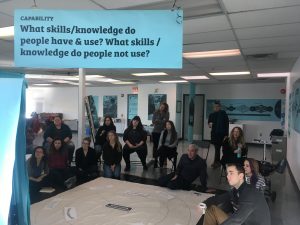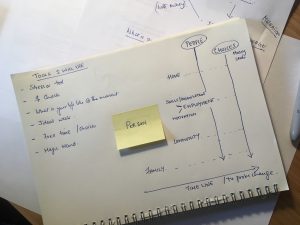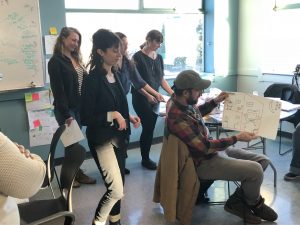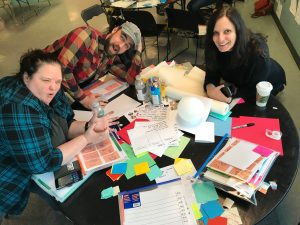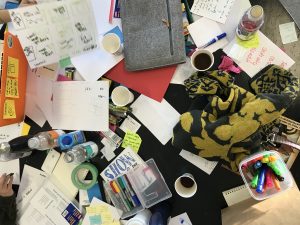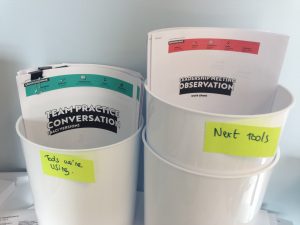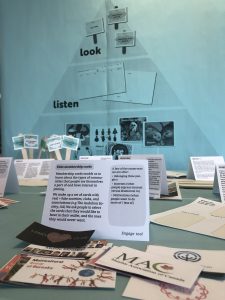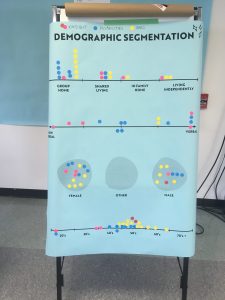One of the big ideas behind Grounded Space is that we’re building permanent capacity within social service organizations to do ongoing design research. Embedded Researchers have 8-16 hours a week to be in the field finding out about the experiences of staff and service users. It sure ain’t easy to carve out the time and space. So this month, we tested a new research rhythm: a four day sprint. The goal? Concentrated time to collect stories from end users using day programs and group homes. All to learn about their appetite for change – and bring that together with earlier research from the staff and organizational perspective.
The grizzled and gritty Embedded Research Teams weathered a lower-mainland snowstorm, non-verbal interviews, empty day programs, an intensive analysis session, and leveled up by learning to make research tools for a population of users who range in verbal ability.
Capacity building for research
Until now, our InWithForward design team has been making all the tools used by the Embedded Researchers. However, because we’re trying to transfer lasting capacity, in this sprint it was the Embedded Researchers tasked with creating their own research tools.
Our research has focused on four key questions:
- Experimental Behavior: what are people changing in their lives? What do people want to change in their lives? What do people want to stay the same?
- Motivation: what are people motivated by? What are they unmotivated by?
- Capability: what skills and knowledge do people have and use? What skills and knowledge do people not use?
- Opportunity: how do people spend their time? What opportunities do they have? What opportunities don’t they have?
However, getting to good insights requires going deeper. Indeed, we have to be curious and go beyond the research questions on the page.
We wrote out all our curiosities on post-it notes; there were a lot! Then to add rigor, we grouped our curiosities around constructs coming from the social sciences, like: What’s their sense of agency? Their locus of control? The type of support they have? These are constructs we explore in our work around homelessness and aging populations as well.
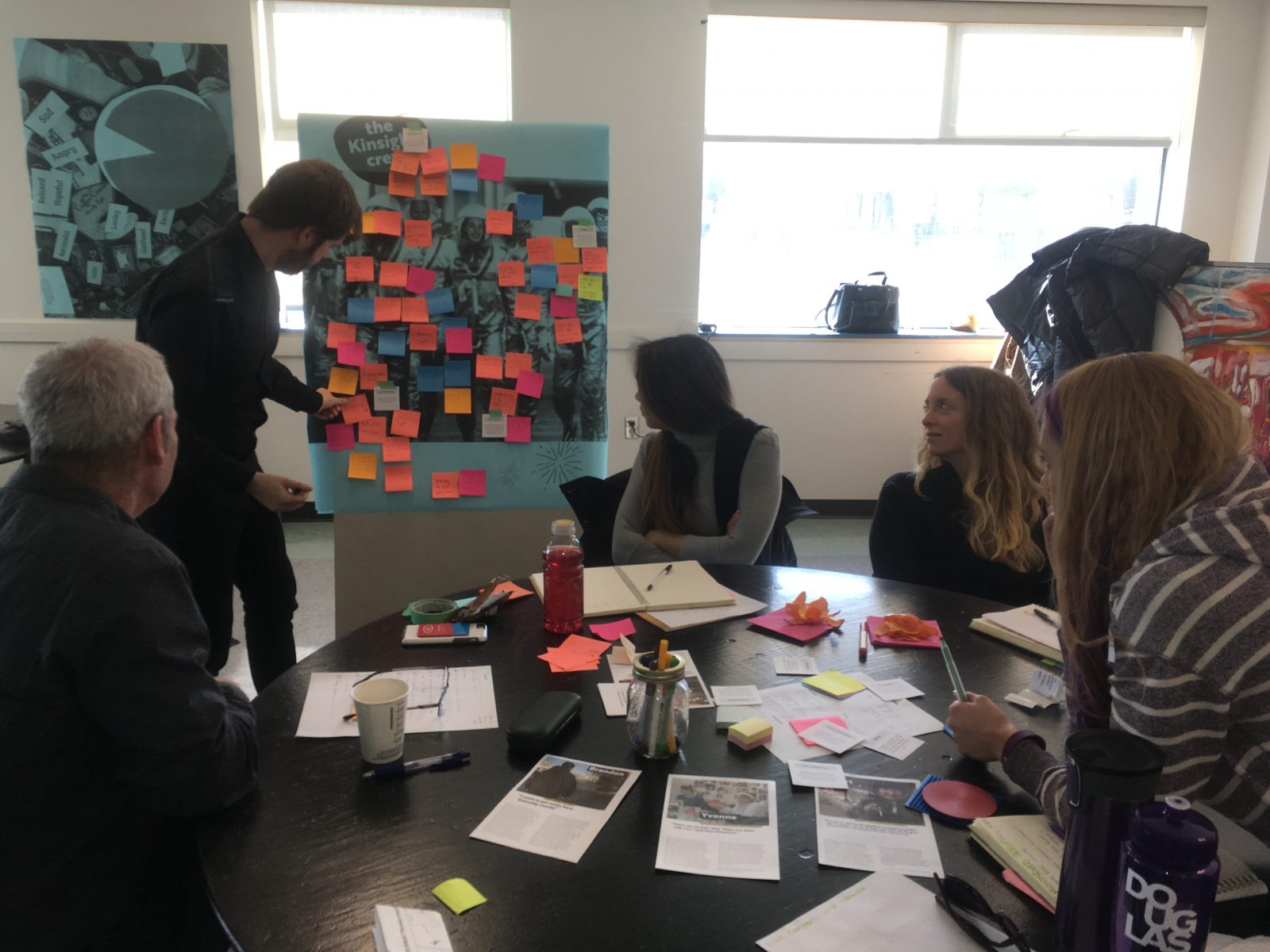
From questions to tools
For this sprint, we had two days for research, and a user group – people with developmental disabilities – for whom traditional interview methods are not always effective. So, we employed more observational methods and projective methods to try and prompt responses. When designing these tools, we were blending social science with design methodologies.
The brain effort kicked into high gear. Taking constructs and determining how best to surface qualitative data. It was a struggle for some researchers to draw and visualize the tools, for others the struggle was around how to frame the tool, for everyone the challenge was making a tool that could function with non-verbal users. The success was that everyone made a tool, we then utilized the photocopier to distribute the work amongst the teams. Very Punk.
Here’s an example of one of the tools an Embedded Researcher made (thanks Peter!):
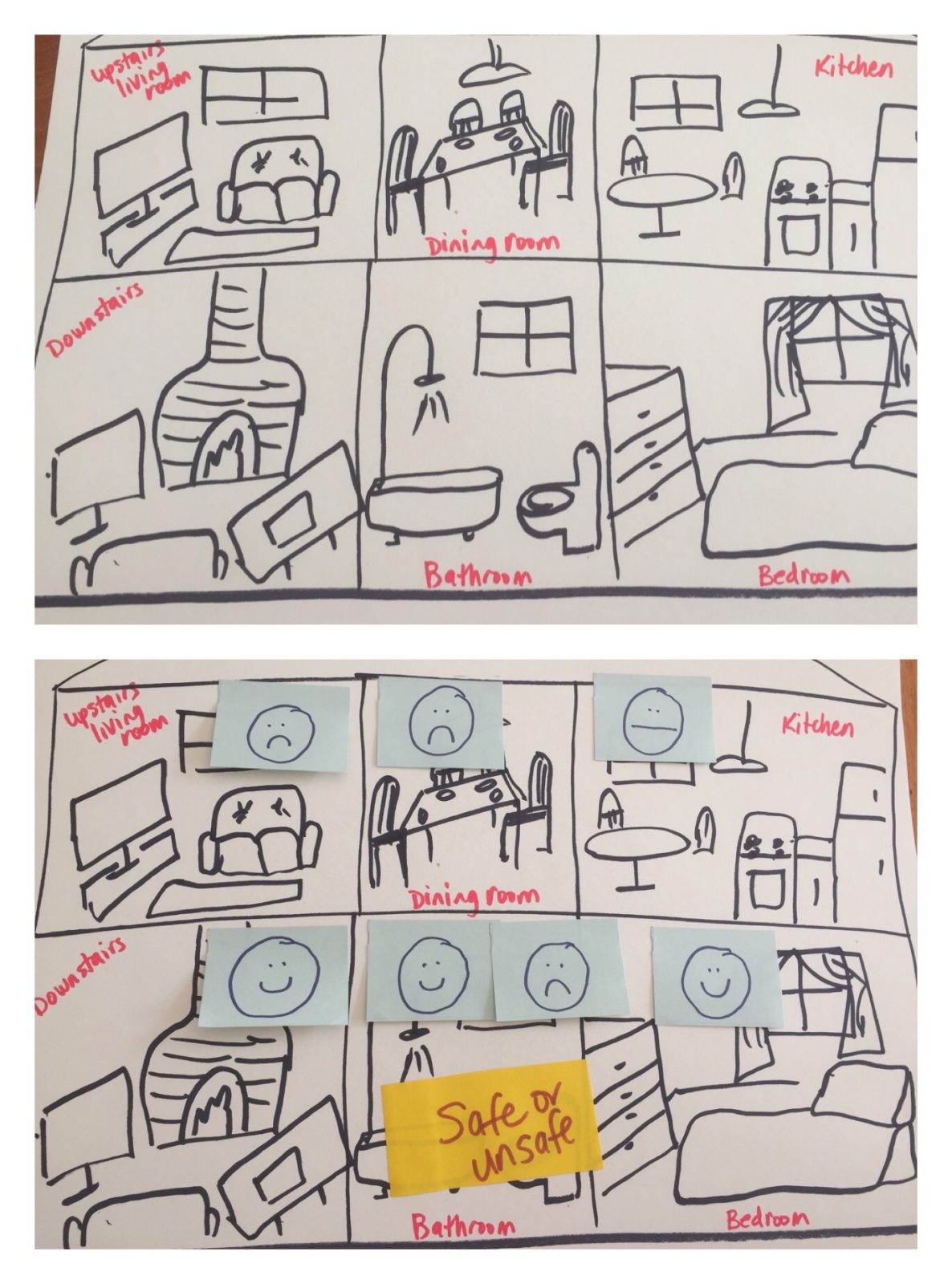
Tool in context: emotional ups and downs
With the massive, for Vancouver, snowfall, research plans had to be altered. The people we planned to meet in day programs didn’t arrive, as handydart transportation didn’t run, people were agitated and concerned about getting home safely, or just didn’t leave the house at all. With limited time for research the pressure of loosing a day compounded an already challenging research context.
The tools also didn’t work as planned, especially the engage tools. Participants ranged from verbal to non verbal, and some of the tools had to be altered and redesigned on the spot, some were not usable at all. It was frustrating, but the researchers adapted well, either modifying the tools or switching approaches. For more effective engagement, one team altered their activity cards by added images, another team developed a observational tool to log non-verbal cues.
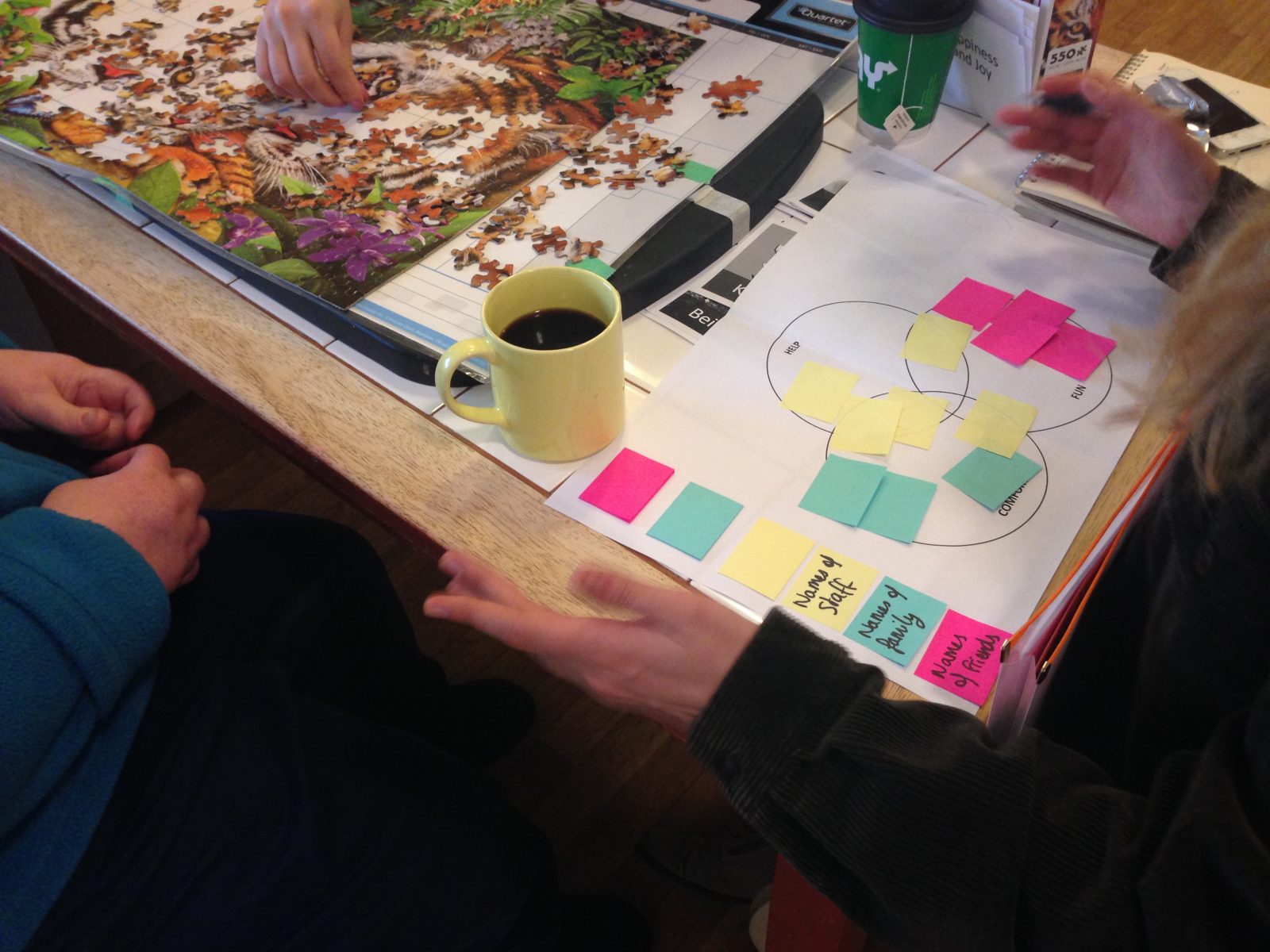
From observation to segmentation
Returning from the challenges of doing research we we had one day to analyse and synthesis the research. This was heavy brain work. Though all the researchers know this users group quite well, this was a way of thinking not often utilized. The constructs chosen on day 1 were used to group and compare people in new ways, not based on demographics alone but also on aspirations, resources, etc.
Here is an example of one of our segmentations, and how naming groups can be linked to painpoints and what ifs (opportunities):
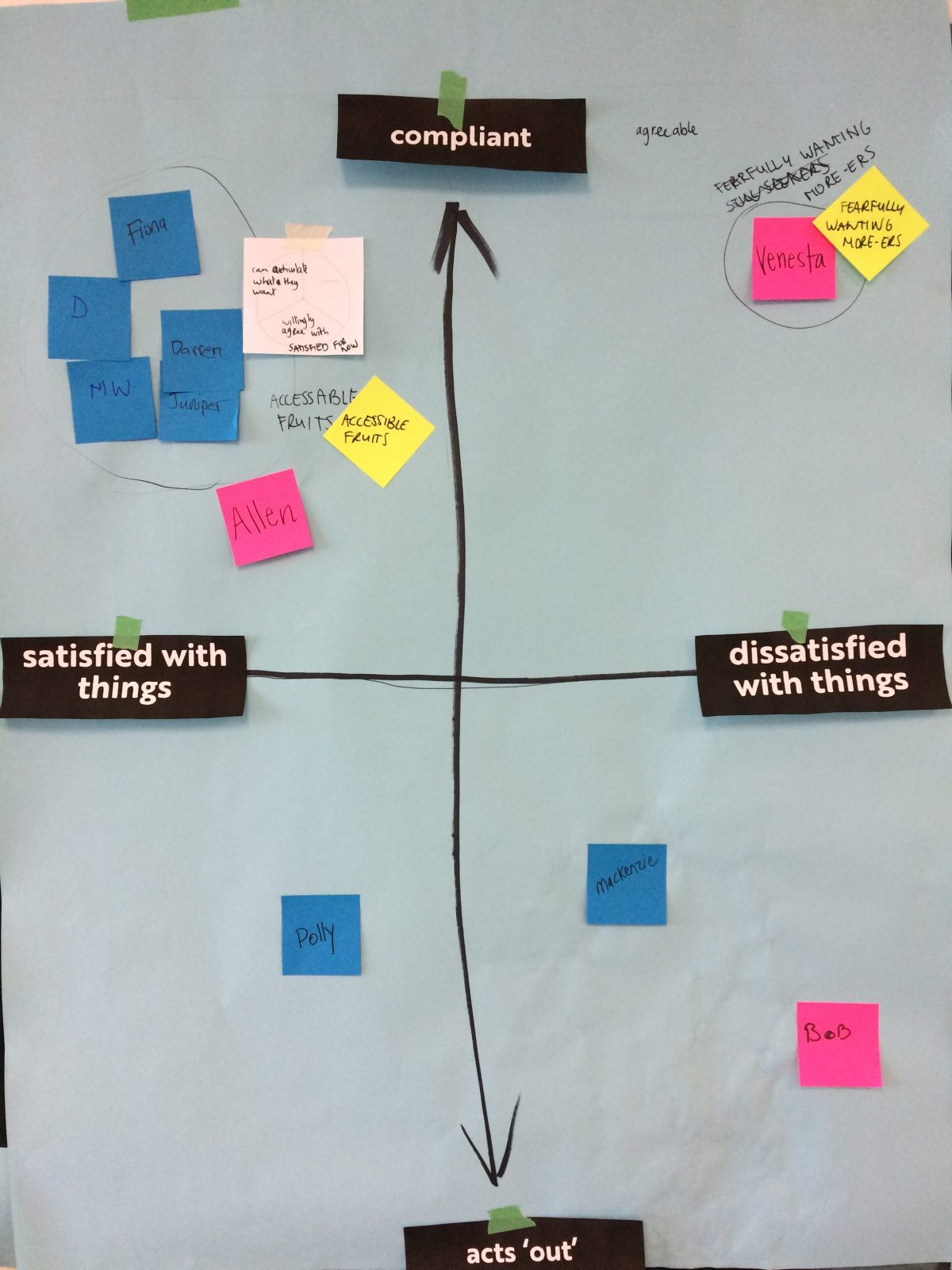
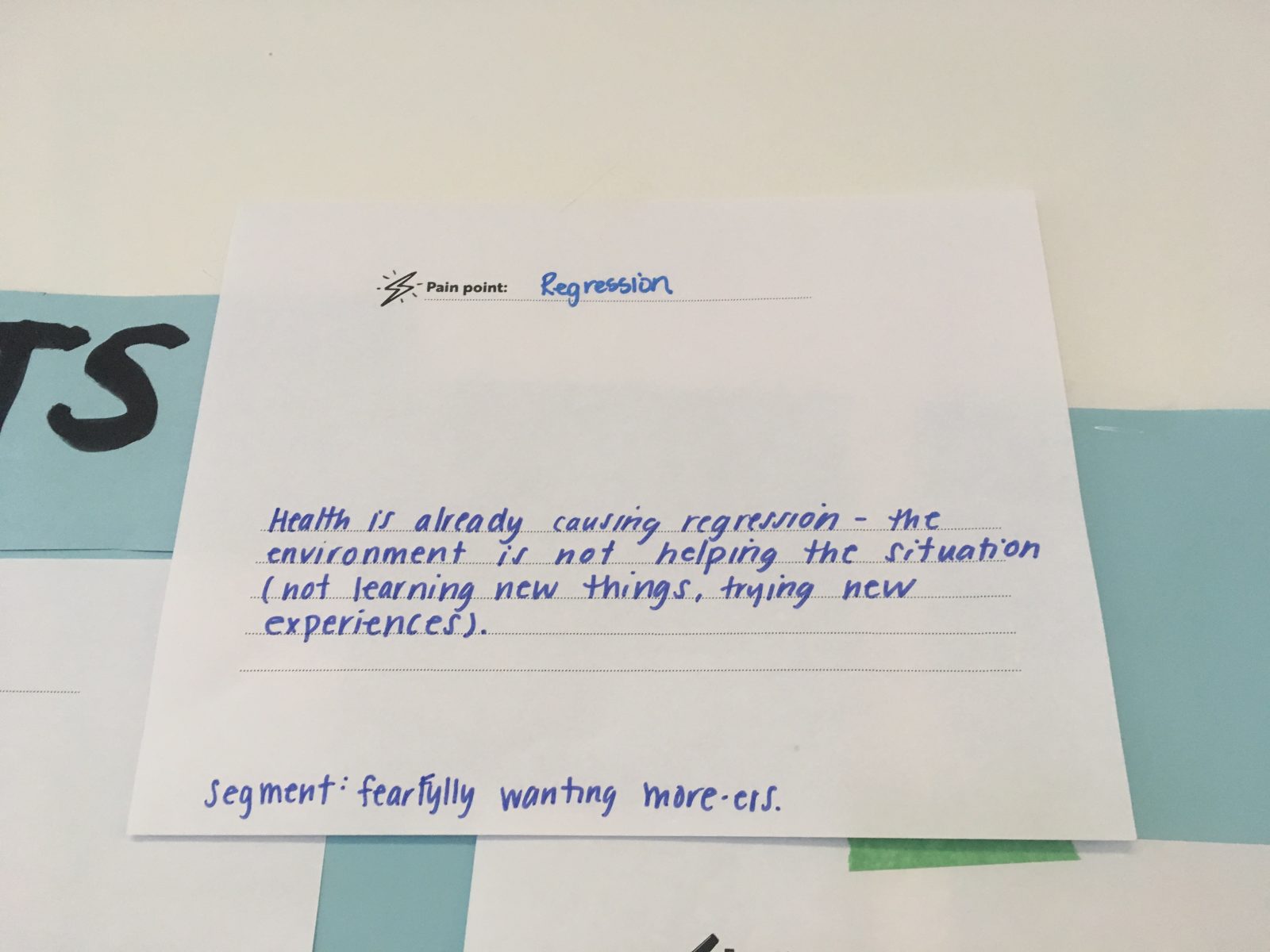
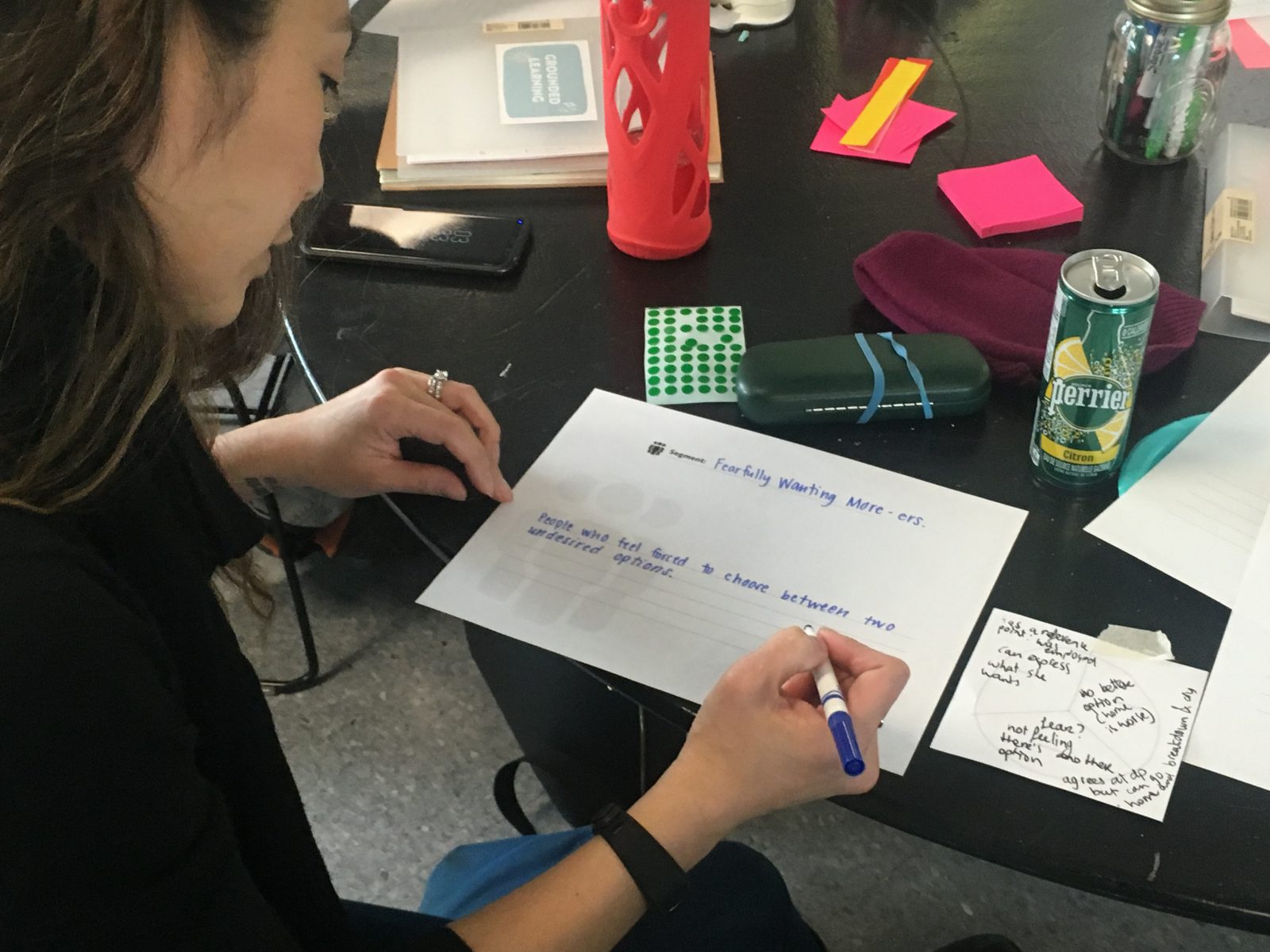
What's next...
If you thought this was a brain pain, wait until the next sprint where we will be bring together user perspectives and staff perspectives. We will be looking for sweet spots where there are overlaps between pain points and opportunities to begin to generate new interventions to make and test.
Here are some more photos from the 4-day User Research Sprint:
